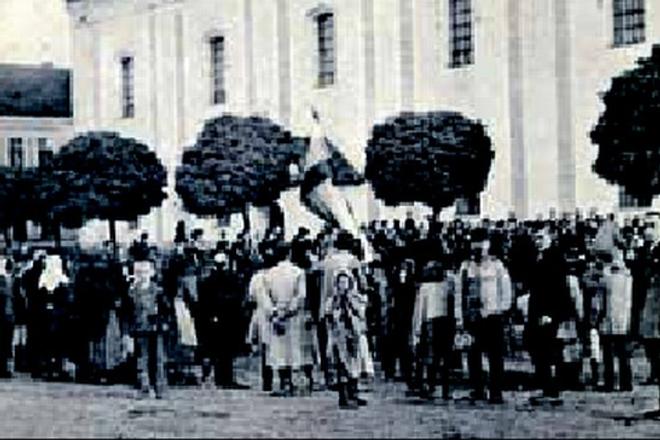AT THE turn of October and November in 1918, the streets of many Slovak towns and villages looked like Myjava, shown in the postcard. The Habsburg monarchy was falling apart and the citizens were experiencing the hope of a new and independent Czechoslovak Republic.
But the notion of freedom back then was very different from the one we know today. Soldiers coming back from the front lines demonstrated few noble ideals. In the town of Malacky in the Záhorie region, the returning soldiers started shooting even before their train stopped and then, with the help of locals, started smashing the windows of houses and plundering Jewish shops.
Most of the Jews and Hungarians who were facing the most violent attacks had managed to flee Slovakia. Among them was Count Pálffy whose manor in Malacky was then plundered and destroyed. It is a ‘public secret’ that much of the count’s luxurious furniture later adorned the homes of many families in Malacky.
The plundering soldiers and locals did not spare the distillery, leading eventually to a positive outcome. After a few hours the crowd became a drunken herd of beasts. The task of a Moravian regiment which had hurriedly marched into Malacky on the morning of November 3, 1918 was made a little easier.


 (source: Myjava)
(source: Myjava)